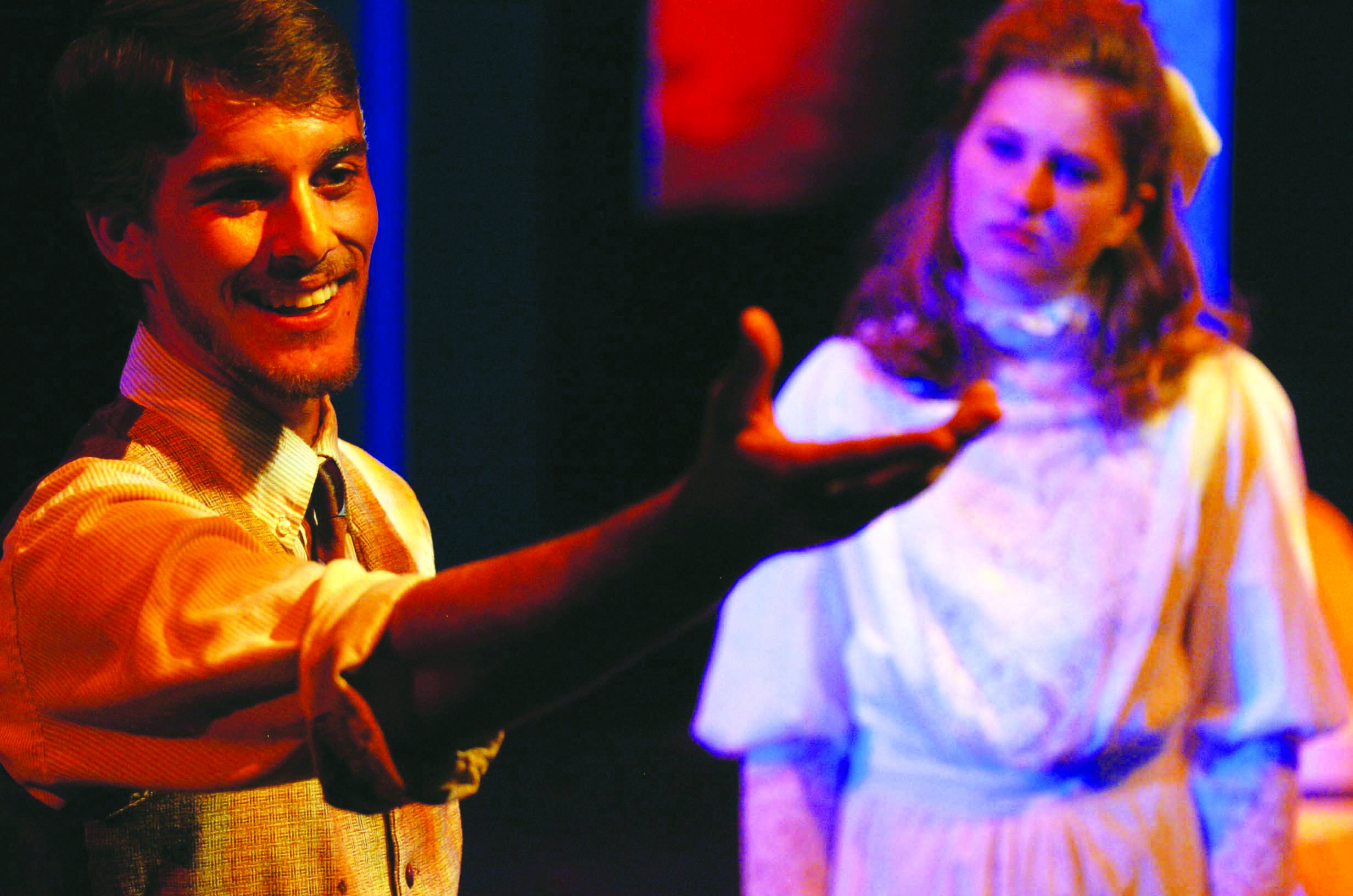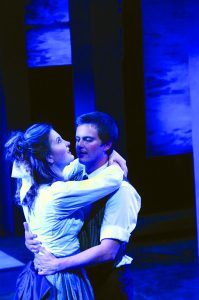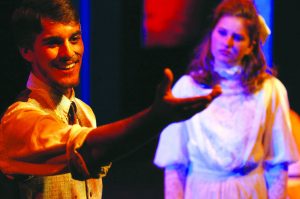
By Arcelia Salado Alvarado

When “The Sea Gull” premiered in St. Petersburg on Oct. 17, 1896, it was a mess. “I shall never either write plays or have them acted,” playwright Anton Chekov proclaimed afterwards, according Geoffrey Borny’s novel “Interpreting Chekhov.”
Thankfully, Chekov did not make true on his promise and audience members attending the opening night of the University of Puget Sound’s rendition of “The Sea Gull” were not disappointed.
“The Sea Gull,” spelled with two words by the translator Jean-Claude van Itallie, is directed by Professor Geoffrey Proehl, with set design by Kurt Walls, lighting by Robert Moors and costume design by Mishka Navarre.
Having read “The Sea Gull” but never before watched it, junior Maloy Moore shared her expectations and hopes for the play before it began.
“I’m interested to see how the Russian comedy plays out, because I think it will be interesting to translate that to an American audience,” Moore said.
The absurdity of the secondary characters and slices of dark humor coupled with fourth-wall breaks throughout remind the audience that reality is not only melodrama or comedy but a healthy mix of the two that complement each other.
Senior Mattea Prison beautifully captured the constant inner battle of actress Irina Nikolayevna Arkadina. Irina’s nuanced personage is exemplary of the themes of the burden of fame and how these might complicate familial relationships.
Keegan Kyle’s performance of Konstantin Treplyov, Irina’s son, had the cadence of a spoken-word poem and his second-act monologue left the audience with chills. Treplyov, deeply flawed in his own right, spoke to the struggles of creating as well as the misery accompanying unrequited love.
The wealth in acting of the supporting cast interwove mundane problems with the themes of fame and choices regarding love and infatuation, reminding the audience that everyone has a story.
In an interview, Proehl noted the stylistic change in the setting.
“Traditionally ‘The Sea Gull’ is done with a very realistic set … Less traditionally but often too it can be done with a more abstract set … In our production … the actual scene design is meant to suggest the lake that is so central to the world of the play. What we wanted to do was almost make it feel like the audience and the actors were never far from the lake and its environment. So it’s more abstract, or more metaphorical, than realistic,” Proehl said.
On the set there are floating paintings of water and clouds, the two nearly indistinguishable, that hang in rectangular pieces interwoven through the set. Though lighting and prop changes, these paintings remain hanging throughout the duration of the play, successfully playing out Proehl’s vision to keep the setting centered around the lake, a symbol for an ideal, a state of nature, something looming around guises of civility.
The other notable stylistic change is that the actors line up at the very beginning and introduce their characters’ names, nicknames and roles within the play. “Having worked on this play for a while now, we know how difficult these Russian names can be, so we decided to go through them before we begin,” Prison said. The additional detail of telling nicknames to an audience that isn’t necessarily familiar with the play assuages any possible confusion with the characters.

“Each time we read or see a play it adds to our total experience. So for some this might be a first introduction to the play. For some it might be a third or fourth time they’ve met the play. I certainly hope that people who have never heard of Chekhov, have never read ‘The Sea Gull,’ could come and see this play and find it engaging, because I think a lot of the things [Chekhov] is writing about we do experience in our daily lives,” Proehl said, assuaging any fear that new viewers might have about understanding the play, and welcoming those who have seen an incarnation of it already.
“Years later, in graduate school, after having lived with the play for a while, a professor asked, ‘What play do you think is most real?’ and without thinking for a moment I said, ‘The Sea Gull.’ I think in the ways it shows people trying to figure out their relationships, trying to figure out their place in time, their place in the world and the confusion and the sometimes joy around that process registered with me [as] being very similar to how I experienced life,” Proehl said.
Viewers should be on the lookout for the subtle changes in wardrobe, as well as the appeal to the senses created by the music before and during the performance.
The next performances will be on Thursday, Nov. 2, Friday, Nov. 3 and Saturday, Nov. 4. All are at 7:30 p.m. in Norton Clapp Theatre, with the exception of a 2 p.m. matinee on Saturday. Tickets are available for purchase online and at the information desk.
“I really enjoyed the play. I think it really influenced my emotional state and I think that’s what theater is meant to do. And right now I feel more vulnerable than when I walked into the theater and I think that’s a good thing,” Moore remarked shortly after the play ended.
